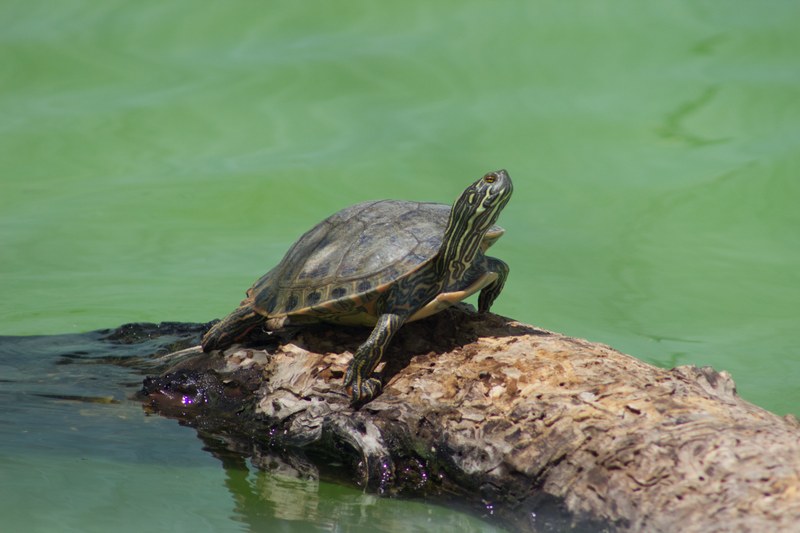
ABQ BioPark helping to save rare New Mexico turtles
Zoo is caring for and breeding western river cooters.
08/02/2017 - The ABQ BioPark is helping with the conservation of another New Mexico native animal—the western river cooter, a species of turtle that lives in the southeast portion of the state.
The Zoo took in seven turtles in June and July, and is keeping them in a tank at the Aquatic Conservation Facility—the same facility used to breed Rio Grande silvery minnows.
Western river cooters are found from the lower Pecos River drainage from just downstream of Brantley Dam to Red Bluff Reservoir and including all of the Black and Delaware rivers. But few nests have been found in the wild, and populations have declined due to habitat degradation caused by stream-dewatering, loss of vegetation and pollution.
One of the primary objectives of the western river cooter program is to collect information about breeding and care to pass onto the New Mexico Department of Game and Fish, which is tasked with conserving this little-known species. Eventually the department aims to breed the turtle, but they need more information about its habits and behaviors.
“There’s almost no information on this species,” said Richard Reams, ABQ BioPark curator of reptiles “It’s not a well-studied turtle.” Reams said despite the lack of information on the turtle, staff can use information from other turtles in the genus to make educated decisions on care. Staff aims to replicate a wild habitat in the turtle’s enclosure as much as possible.
With three males and four females, BioPark staff is hoping for babies soon—a recent radiograph has indicated that one of the females has 12 eggs. The turtles have access to a sandy nesting chamber to bury their eggs when the time is right. Because the turtle eggs will be buried, ABQ BioPark staff buried some tissue in the nesting chamber—if the tissue becomes exposed, it will clue staff that the eggs have been deposited. Staff will collect the eggs and incubate them at two different temperatures to produce an even number of male and female turtles (in many species of turtle, higher temperatures produce male hatchlings while lower temperatures produce females). Some of these babies will eventually move to the Reptile House for public viewing and others may one day find their way to other zoos across the country.
The ABQ BioPark's river cooters could also eventually serve as a backup population for wild turtles.

